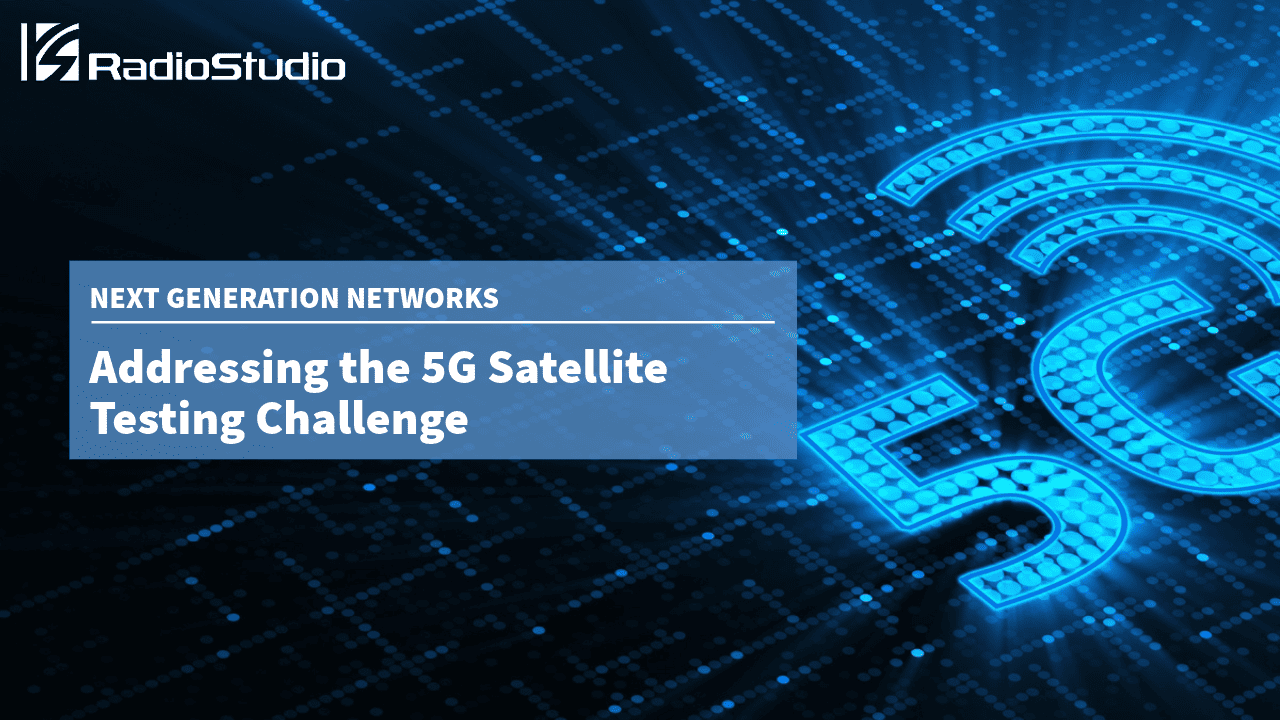The past year has seen a growing momentum in taking 5G tech into space. Across the ecosystem, from technology vendors to equipment manufacturers to traditional cellular mobile operators and their satellite counterparts, the industry is aligning to put 5G in orbit—in the pursuit of global connectivity and enhanced communication capabilities. This offers the potential to expand coverage to remote and underserved regions, providing a robust alternative to terrestrial networks.
This post was originally published in EETimes.
Use Case: 5G Satellite Testing

Problem Statement
The deployment of 5G on satellite radio interface brings in newer challenges. Before these are addressed for commercial deployment, there is a major hurdle in testing.

Realization Approach
Testing a 5G system on satellite entails certain customization on the access stratum protocol stack, to address the radio channel conditions. This includes certain tweaks across PHY/MAC/RRC layers and a custom test harness.

Solution Space
By employing a custom software that drives the network functional application platform interface (nFAPI) standard interface, the 5G NR access stratum is configured to transmit and receive signals that simulate the typical delays and variance in satellite communication.
However, while this move brings a range of exciting new possibilities, it also delivers new, unique challenges not faced by traditional terrestrial 5G.
The Main Challenges in 5G Satellite Testing
Just one such area is testing. For non-terrestrial 5G solutions, this is of paramount importance.
Operating 5G in space has differences that can both increase and, in some cases, decrease complexity. For example, the radio channel itself may be simpler in a non-terrestrial environment, free from reflections and with a single-input and single-output (SISO) configuration. This relative simplicity makes channel emulation less complex compared with terrestrial 5G. However, it is the wide variability of parameters that poses significant challenges during testing.
Unlike terrestrial scenarios, the non-terrestrial environment introduces a wide range of factors, such as link delays that increase from nanoseconds to milliseconds for low Earth orbit (LEO) satellites and vary over a wide range. Doppler effects also become more pronounced, rising from a few kilohertz to tens of kilohertz for LEO satellites, and are also prone to higher rates of change.
Such variability necessitates the redesign of hybrid automatic repeat request (HARQ) systems, requiring system timers to be lengthened for more reliable system operation and data transmission, which again adds to test complexity. In addition, the optimization of MCS coding schemes in the operation of HARQ will be a key performance feature, balancing throughput versus re-transmissions.
The user equipment (UE) connection time is severely limited in non-terrestrial 5G deployments, typically lasting only seven to eight minutes on a single LEO satellite orbital transition. This constraint demands very robust link setup and maintenance and requires specific selective physical random access channel (PRACH) formats to be used, adding further complexity to the testing process.
The challenges in testing a 5G physical layer for non-terrestrial applications are not only technical but also financial. The test equipment required is naturally expensive, but the development of commercial solutions has been slow to emerge. This lack of commercial equipment can pose hurdles for industry players aiming to develop, test, optimize and deliver their satellite solutions effectively.
A Custom Test Harness for 5G Satellite Testing
Companies developing high-performance non-terrestrial 5G physical layer solutions must solve these challenges. Therefore, along with its NTN 5G physical layer, we have developed a custom software suite that enables semi-static testing based on a test harness environment. The software drives the network functional application platform interface (nFAPI) standard interface and automatically configures test equipment for manipulating the channel conditions for each test. The nFAPI interface allows testers to instruct Layer 1 (L1) to transmit and receive signals at specific times and locations within each slot on a per-slot basis. By providing this advanced toolset, we were able to conduct a thorough automated test and analysis of the 5G physical layer across a wide range of channel conditions prior to successful integration with an L2/L3 partner, enabling the delivery of a complete gNodeB solution for non-terrestrial environments.
Conclusion
It’s clear that the testing of the 5G physical layer for non-terrestrial applications is a critical and indispensable step in creating a robust and reliable satellite solution. While the radio channel may be simpler in some respects, the wide variability of parameters, high link delays and specific requirements for PRACH formats present formidable challenges.
The scarcity of commercial testing equipment further compounds the complexity of this task. Nonetheless, companies are increasingly bringing solutions to market as the market matures, meaning that industry players can navigate these challenges and pave the way for a successful and efficient 5G satellite future.


